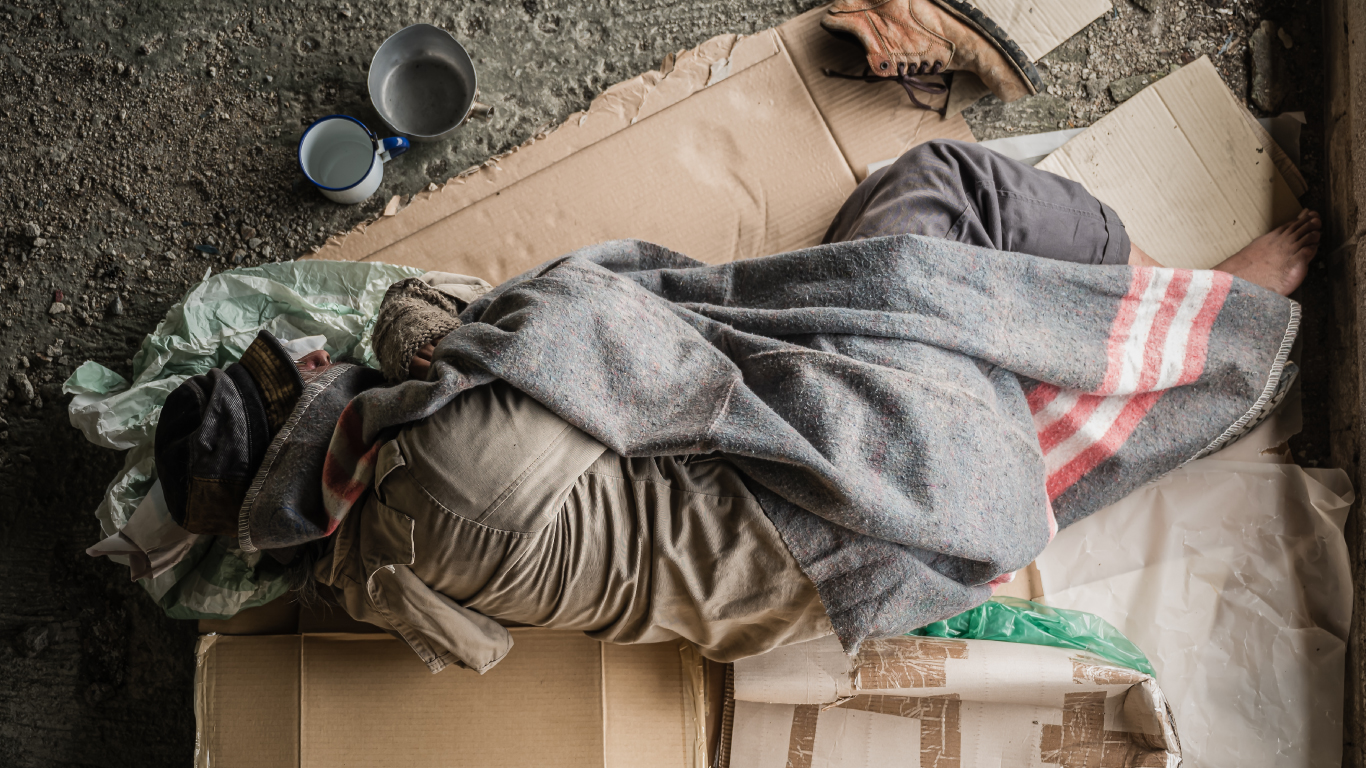
Having a safe and stable place to call home is central to leading a healthy and prosperous life. In 2021, we asked Canadian households if they had ever experienced some form of homelessness in their lifetime. Over one in ten (11.2%) Canadians or 1,690,000 people reported that they had.
Homelessness is often thought of as living in a shelter, or completely unhoused in an encampment or public space. This kind of homelessness in Canada is referred to as absolute homelessness, an experience shared by 2.2% of households at some point in their lives. There are, however, many more Canadians (10.5%) who have experienced hidden homelessness, like couch surfing, because they had nowhere else to live.
Inequities and pathways of homelessness
This lack of stable housing can result in disparities between groups of people, with some more or less likely to have faced homelessness than others. For example, Indigenous households (29.5%) were almost three times as likely to have experienced some form of homelessness when compared with the total population, while racialized (9.5%) and immigrant (8.3%) households were below the national average. Similarly, recent point-in-time counts of homeless shelters nation-wide have found that 35% of respondents identify as Indigenous.
What drives people into homelessness in Canada and why have so many Canadians found themselves without a home? We asked Canadians to tell us what happened leading up to their homelessness episode, and for those who experienced hidden homelessness, we asked those who had been homeless for more than a month. Here’s what they told us…
Financial challenges are the leading cause of homelessness
Deteriorating housing affordability following the onset of the pandemic, combined with higher unemployment and fewer job vacancies in recent months, along with a surge in inflation throughout 2021 and 2022, has led to higher costs for essential goods and services. These factors continue to place financial pressures on many households across Canada.
In the fall of 2022, almost half (44.0%) of Canadians were very concerned with their household’s ability to afford housing or rent. So, it comes as no surprise that the most reported reason leading to homelessness was financial issues (41.8%).
Victims of abuse may have nowhere to go
The link between abusive home situations and homelessness is an ongoing concern as the incidence of family violence in Canada rose for the fifth consecutive year in 2021, with women and girls accounting for two-thirds of the victims.
Relationship issues (36.9%) was the second leading factor driving Canadians into homelessness. A related driver was fleeing abuse (13.3%)—a common pathway into homelessness for many, but four times more likely for women than for men (20.9% vs 5.2%).
When looking at absolute homelessness exclusively, these figures double—with just over two in five women (40.4%) reporting absolute homelessness at some point as a result of fleeing abuse, compared with 12.1% of men.
Health issues can interrupt housing stability
While financial and relationship issues are the most common causes of homelessness, health-related issues can also lead to homelessness episodes.
Canadians who have experienced any form of homelessness were more likely to report fair or poor mental health (38.0% versus 17.3%) than the overall population. More respondents listed health issues as a major factor contributing to absolute homelessness (16.5%) than to hidden homelessness (8.9%).
Canadians experiencing homelessness and underlying mental health conditions have also been highly represented in recent opioid hospitalizations.
Moving doesn’t always lead to finding a home
Canadians move for a variety of reasons, including changing household size, employment, better housing or neighbourhoods, and evictions, leading to many diverse experiences of hidden homelessness.
Other notable drivers of hidden homelessness are relocation (20.9%) and waiting to move into a new home (16.0%). Over one in three households relocating at some point in the past reported waiting over six months in a state of hidden homelessness.
Becoming housed may not be the end of housing need
Households experiencing homelessness in the past were more likely to be living in dwellings in need of major repairs or in core housing need. No matter how someone becomes homeless, housing (or the lack thereof) has been shown to have a significant effect on one’s future—for better or for worse.
StatsCAN app
Did you know you can read StatsCAN Plus articles and more on the StatsCAN app? If you’re already using the app, let us know what you think by leaving a review in the Apple App Store and Google Play.
Contact information
For more information, contact the Statistical Information Service (toll-free 1-800-263-1136; 514-283-8300; infostats@statcan.gc.ca) or Media Relations (statcan.mediahotline-ligneinfomedias.statcan@statcan.gc.ca).
